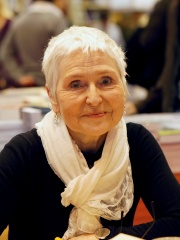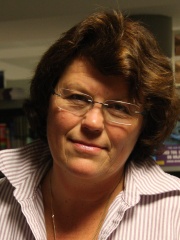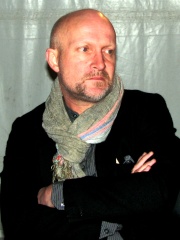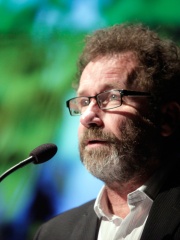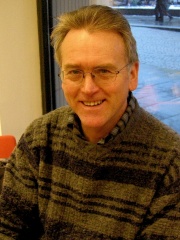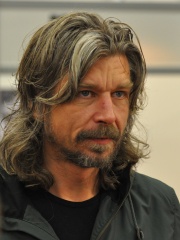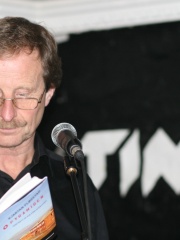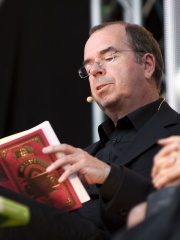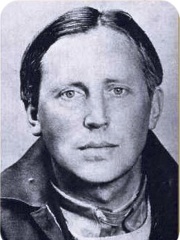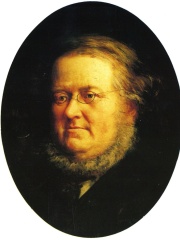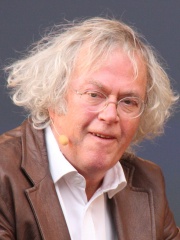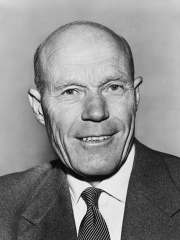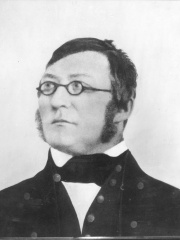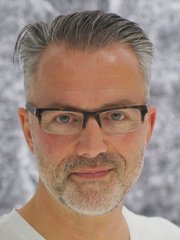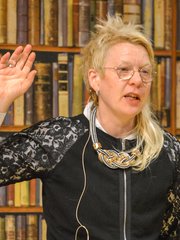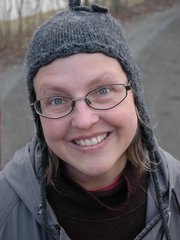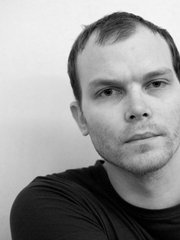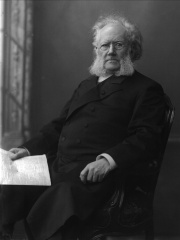
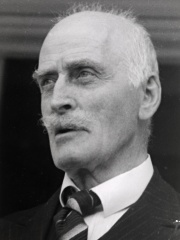
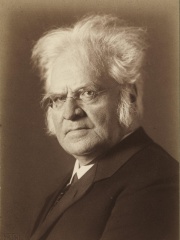
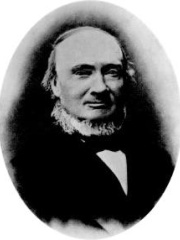
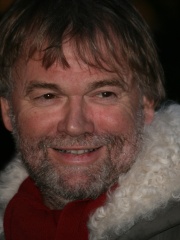
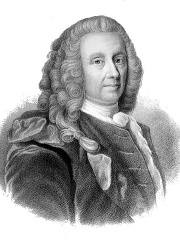
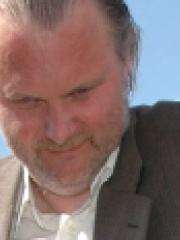
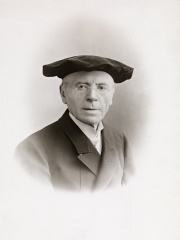
The Most Famous
WRITERS from Norway
Top 10
The following people are considered by Pantheon to be the top 10 most legendary Norwegian Writers of all time. This list of famous Norwegian Writers is sorted by HPI (Historical Popularity Index), a metric that aggregates information on a biography's online popularity. Visit the rankings page to view the entire list of Norwegian Writers.

1. Henrik Ibsen (1828 - 1906)
With an HPI of 83.92, Henrik Ibsen is the most famous Norwegian Writer. His biography has been translated into 114 different languages on wikipedia.
Henrik Johan Ibsen (; Norwegian: [ˈhɛ̀nrɪk ˈɪ̀psn̩]; 20 March 1828 – 23 May 1906) was a Norwegian playwright. He is considered one of the world's pre-eminent writers of the 19th century and is often referred to as "the father of modern drama." He pioneered theatrical realism but also wrote lyrical epic works. His major works include Brand, Peer Gynt, Emperor and Galilean, A Doll's House, Ghosts, An Enemy of the People, The Wild Duck, Rosmersholm, Hedda Gabler, The Master Builder, and When We Dead Awaken. Ibsen is the most frequently performed dramatist in the world after Shakespeare. Store norske leksikon describes him as "the center of the Norwegian literary canon." Ibsen was born into the merchant elite of the port town of Skien and had strong family ties to the Paus family and other families who had held power and wealth in Telemark since the mid-1500s. He established himself as a theater director in Norway during the 1850s and gained international recognition as a playwright with the plays Brand and Peer Gynt in the 1860s. From 1864, he lived for 27 years in Italy and Germany, primarily in Rome, Dresden, and Munich, making only brief visits to Norway, before moving to Christiania (Oslo) in 1891. Most of Ibsen's plays are set in Norway, often in bourgeois environments and places reminiscent of Skien, and he frequently drew inspiration from family members. Ibsen's early verse play Peer Gynt has strong surreal elements. After Peer Gynt Ibsen abandoned verse and wrote in realistic prose. Several of his later dramas were considered scandalous to many of his era, when European theatre was expected to model strict morals of family life and propriety. Ibsen's later work examined the realities that lay behind the façades, revealing much that was disquieting to a number of his contemporaries. He had a critical eye and conducted a free inquiry into the conditions of life and issues of morality. Critics frequently rate The Wild Duck and Rosmersholm as Ibsen's best works; the playwright himself regarded Emperor and Galilean as his masterpiece. Ibsen is considered one of the most important playwrights in the history of world literature and is widely regarded as the foremost playwright of the nineteenth century. Sigmund Freud considered him on par with Shakespeare and Sophocles, while George Bernard Shaw argued that Ibsen had surpassed Shakespeare as the world's pre-eminent dramatist. Ibsen influenced other playwrights and novelists such as George Bernard Shaw, Oscar Wilde, and James Joyce. Considered a profound poetic dramatist, he is widely regarded as the most important playwright since Shakespeare. Ibsen is commonly described as the most famous Norwegian internationally. Ibsen wrote his plays in Dano-Norwegian, and they were published by the Danish publisher Gyldendal. He was the father of Prime Minister Sigurd Ibsen and a relative of the singer Ole Paus.

2. Knut Hamsun (1859 - 1952)
With an HPI of 81.71, Knut Hamsun is the 2nd most famous Norwegian Writer. His biography has been translated into 103 different languages.
Knut Hamsun (; 4 August 1859 – 19 February 1952) was a Norwegian writer who was awarded the Nobel Prize in Literature in 1920. Hamsun's work spans more than 70 years and shows variation with regard to consciousness, subject, perspective and environment. He published more than 23 novels, a collection of poetry, some short stories and plays, a travelogue, works of non-fiction and some essays. Hamsun is considered "one of the most influential and innovative literary stylists of the past hundred years" (ca. 1890–1990). He pioneered psychological literature with techniques of stream of consciousness and interior monologue, and influenced authors such as Thomas Mann, Franz Kafka, Maxim Gorky, Stefan Zweig, Henry Miller, Hermann Hesse, John Fante, James Kelman, Charles Bukowski and Ernest Hemingway. Isaac Bashevis Singer called Hamsun "the father of the modern school of literature in his every aspect—his subjectiveness, his fragmentariness, his use of flashbacks, his lyricism. The whole modern school of fiction in the twentieth century stems from Hamsun". Since 1916, several of Hamsun's works have been adapted into motion pictures. On 4 August 2009, the Knut Hamsun Centre was opened in Hamarøy Municipality. The young Hamsun objected to realism and naturalism. He argued that the main object of modernist literature should be the intricacies of the human mind, that writers should describe the "whisper of blood, and the pleading of bone marrow". Hamsun is considered the "leader of the Neo-Romantic revolt at the turn of the 20th century", with works such as Hunger (1890), Mysteries (1892), Pan (1894), and Victoria (1898). His later works—in particular his "Nordland novels"—were influenced by the Norwegian new realism, portraying everyday life in rural Norway and often employing local dialect, irony, and humour. Hamsun published only one poetry collection, The Wild Choir, which has been set to music by several composers. Hamsun held strong Anglophobic views, and openly supported Adolf Hitler and Nazi Germany, travelling to meet Hitler during the German occupation of Norway. Due to his professed support for the occupation of Norway and the Quisling regime, he was charged with treason after the war. Due to alleged psychological problems and issues relating to old age, he was not convicted, but in 1948 he was heavily fined. Hamsun's last book, On Overgrown Paths, authored in semi-imprisonment in Landvik, concerned his postwar treatment and his rebuttal to accusations of mental ineptness.

3. Bjørnstjerne Bjørnson (1832 - 1910)
With an HPI of 81.19, Bjørnstjerne Bjørnson is the 3rd most famous Norwegian Writer. His biography has been translated into 94 different languages.
Bjørnstjerne Martinius Bjørnson ( BYURN-sən, Norwegian: [ˈbjø̂ːɳstjæːɳə mɑrˈtiːnɪʉ̂s ˈbjø̂ːɳsɔn]; 8 December 1832 – 26 April 1910) was a Norwegian writer who received the 1903 Nobel Prize in Literature "as a tribute to his noble, magnificent and versatile poetry, which has always been distinguished by both the freshness of its inspiration and the rare purity of its spirit". The first Norwegian Nobel laureate, he was a prolific polemicist and extremely influential in Norwegian public life and Scandinavian cultural debate. Bjørnson is considered to be one of the four great Norwegian writers, alongside Ibsen, Lie, and Kielland. He is also celebrated for his lyrics to the Norwegian national anthem, "Ja, vi elsker dette landet". The composer Fredrikke Waaler based a composition for voice and piano (Spinnersken) on a text by Bjørnson, as did Anna Teichmüller (Die Prinzessin).

4. Ivar Aasen (1813 - 1896)
With an HPI of 74.48, Ivar Aasen is the 4th most famous Norwegian Writer. His biography has been translated into 57 different languages.
Ivar Andreas Aasen (Norwegian pronunciation: [ˈîːvɑr ˈòːsn̩]; 5 August 1813 – 23 September 1896) was a Norwegian philologist, lexicographer, playwright, and poet. He is best known for having assembled one of the two official written versions of the Norwegian language, Nynorsk, from various dialects.
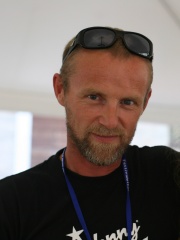
5. Jo Nesbø (b. 1960)
With an HPI of 73.33, Jo Nesbø is the 5th most famous Norwegian Writer. His biography has been translated into 52 different languages.
Jon "Jo" Nesbø (Norwegian: [ˈjuː ˈnɛ̀sbøː]; born 29 March 1960) is a Norwegian novelist and musician. His books had sold over 50 million copies worldwide by 2021, making him the most successful Norwegian author to date. He first came to prominence as the singer, rhythm guitarist and principal songwriter of country-pop band Di Derre, when their second album became a big hit in Norway, almost selling enough to make double platinum. The album was initially titled Kvinner & Klær (Women & Clothing), but had to be renamed and re-released as Jenter & Sånt (Girls & Stuff) after the eponymous Norwegian women's fashion magazine filed a complaint. His first novel, The Bat, was released in 1997, one year before Di Derre's fourth and final studio album. It was awarded the Riverton Prize for best Norwegian crime novel, and the Glass Key prize for best Nordic crime novel. After 1998 he concentrated on writing, continuing the internationally successful crime novel series about inspector Harry Hole, collecting several awards nationally and internationally. In 2007 he released his first children's book, Doctor Proctor's Fart Powder, which also was hugely successful. Headhunters, the first film to be based on a Nesbø novel, was released in 2011. Since then several films and TV series have been based on his books, both the crime novels and the children's books, often with Nesbø himself as script writer.

6. Jostein Gaarder (b. 1952)
With an HPI of 72.58, Jostein Gaarder is the 6th most famous Norwegian Writer. His biography has been translated into 56 different languages.
Jostein Gaarder (Norwegian: [ˈjùːstæɪn ˈɡòːɖər]; born 8 August 1952) is a Norwegian intellectual and author of several novels, short stories, and children's books. Gaarder often writes from the perspective of children, exploring their sense of wonder about the world. He often utilizes metafiction in his works and constructs stories within stories. His best known work is the novel Sophie's World: A Novel About the History of Philosophy (1991). It has been translated into 60 languages; there are over 40 million copies in print.

7. Ludvig Holberg (1684 - 1754)
With an HPI of 72.42, Ludvig Holberg is the 7th most famous Norwegian Writer. His biography has been translated into 46 different languages.
Ludvig Holberg, Baron of Holberg (3 December 1684 – 28 January 1754) was a writer, essayist, philosopher, historian and playwright born in Bergen, Norway, during the time of the Dano–Norwegian dual monarchy. He was influenced by Humanism, the Enlightenment and the Baroque. Holberg is considered the founder of modern Danish and Norwegian literature. He was also a prominent Neo-Latin author, known across Europe for his writing. He is best known for the comedies he wrote in 1722–1723 for the Lille Grønnegade Theatre in Copenhagen. Holberg's works about natural and common law were widely read by many Danish law students over two hundred years, from 1736 to 1936.

8. Jon Fosse (b. 1959)
With an HPI of 71.09, Jon Fosse is the 8th most famous Norwegian Writer. His biography has been translated into 66 different languages.
Jon Olav Fosse (Norwegian: [ˈjʊ̀nː ˈfɔ̂sːə]; born 29 September 1959) is a Norwegian author, translator, and playwright. In 2023, he was awarded the Nobel Prize in Literature "for his innovative plays and prose which give voice to the unsayable." Fosse's work spans over seventy novels, poems, children's books, essays, and theatre plays, which have been translated into over fifty languages. The most performed Norwegian playwright after Henrik Ibsen, Fosse is currently—with productions presented on over a thousand stages worldwide—one of the most performed contemporary playwrights globally. His minimalist and deeply introspective plays, with language often bordering on lyrical prose and poetry, have been noted to represent a modern continuation of the dramatic tradition established by Henrik Ibsen in the 19th century. Fosse's work has often been placed within the tradition of post-dramatic theatre, while several of his notable novels have been described as belonging to the style of post-modernist and avant-garde literature, due to their minimalism, lyricism and unorthodox use of syntax.

9. Jonas Lie (1833 - 1908)
With an HPI of 69.12, Jonas Lie is the 9th most famous Norwegian Writer. His biography has been translated into 31 different languages.
Jonas Lauritz Idemil Lie (Norwegian: [liː]; 6 November 1833 – 5 July 1908) was a Norwegian novelist, poet, and playwright who, together with Henrik Ibsen, Bjørnstjerne Bjørnson and Alexander Kielland, is considered to have been one of the Four Greats of 19th century Norwegian literature.
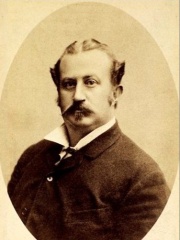
10. Alexander Kielland (1849 - 1906)
With an HPI of 67.46, Alexander Kielland is the 10th most famous Norwegian Writer. His biography has been translated into 38 different languages.
Alexander Lange Kielland (Norwegian: [ɑɫɛˈksɑ̀ndər ˈlɑ̂ŋːə ˈçɛ̂lːɑn]; 18 February 1849 – 6 April 1906) was a Norwegian realistic writer of the 19th century. He is one of the so-called "The Four Greats" of Norwegian literature, along with Henrik Ibsen, Bjørnstjerne Bjørnson and Jonas Lie.
People
Pantheon has 91 people classified as Norwegian writers born between 900 and 2006. Of these 91, 32 (35.16%) of them are still alive today. The most famous living Norwegian writers include Jo Nesbø, Jostein Gaarder, and Jon Fosse. The most famous deceased Norwegian writers include Henrik Ibsen, Knut Hamsun, and Bjørnstjerne Bjørnson. As of April 2024, 4 new Norwegian writers have been added to Pantheon including Thomas Enger, Beate Grimsrud, and Gro Dahle.
Living Norwegian Writers
Go to all RankingsJo Nesbø
1960 - Present
HPI: 73.33
Jostein Gaarder
1952 - Present
HPI: 72.58
Jon Fosse
1959 - Present
HPI: 71.09
Herbjørg Wassmo
1942 - Present
HPI: 64.27
Anne Holt
1958 - Present
HPI: 61.97
Lars Saabye Christensen
1953 - Present
HPI: 61.63
Karin Fossum
1954 - Present
HPI: 61.54
Per Petterson
1952 - Present
HPI: 60.74
Gunnar Staalesen
1947 - Present
HPI: 60.07
Karl Ove Knausgård
1968 - Present
HPI: 59.33
Kjartan Fløgstad
1944 - Present
HPI: 58.27
Jan Kjærstad
1953 - Present
HPI: 56.35
Deceased Norwegian Writers
Go to all RankingsHenrik Ibsen
1828 - 1906
HPI: 83.92
Knut Hamsun
1859 - 1952
HPI: 81.71
Bjørnstjerne Bjørnson
1832 - 1910
HPI: 81.19
Ivar Aasen
1813 - 1896
HPI: 74.48
Ludvig Holberg
1684 - 1754
HPI: 72.42
Jonas Lie
1833 - 1908
HPI: 69.12
Alexander Kielland
1849 - 1906
HPI: 67.46
Nordahl Grieg
1902 - 1943
HPI: 67.10
Peter Christen Asbjørnsen
1812 - 1885
HPI: 66.59
Dag Solstad
1941 - 2025
HPI: 66.11
Tarjei Vesaas
1897 - 1970
HPI: 65.59
Henrik Wergeland
1808 - 1845
HPI: 65.32
Newly Added Norwegian Writers (2025)
Go to all RankingsThomas Enger
1973 - Present
HPI: 44.51
Beate Grimsrud
1963 - 2020
HPI: 43.35
Gro Dahle
1962 - Present
HPI: 43.34
Johan Harstad
1979 - Present
HPI: 37.60
Overlapping Lives
Which Writers were alive at the same time? This visualization shows the lifespans of the 25 most globally memorable Writers since 1700.

